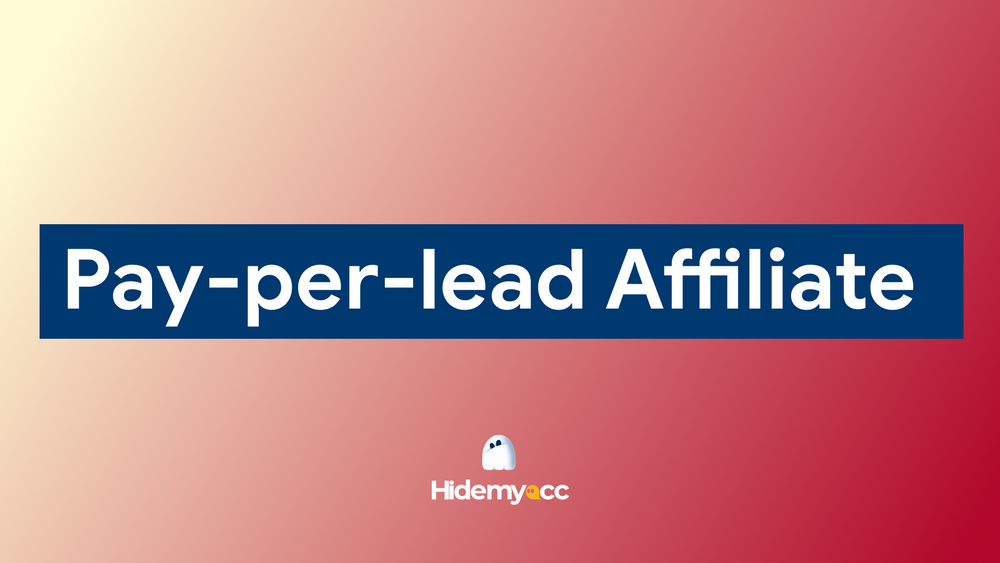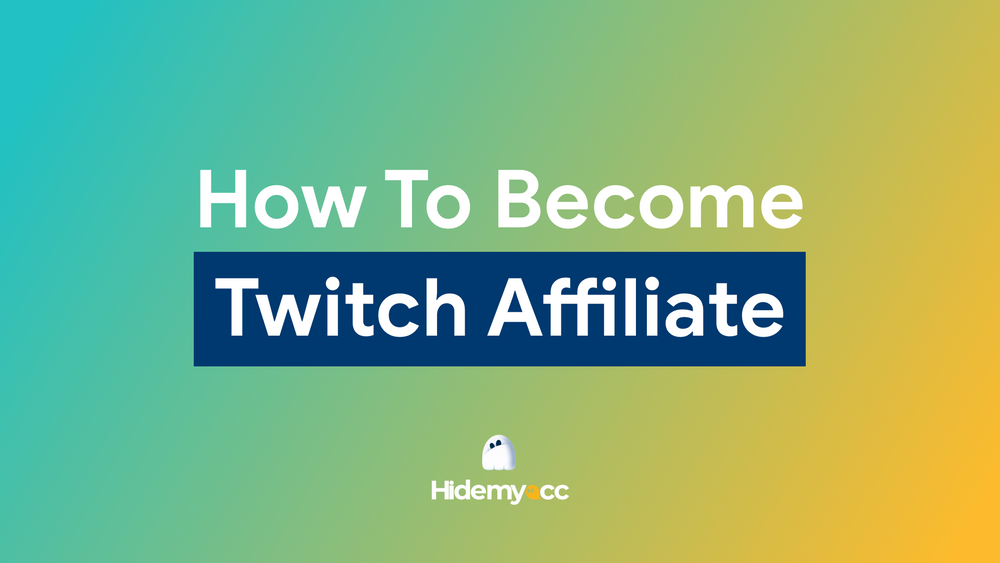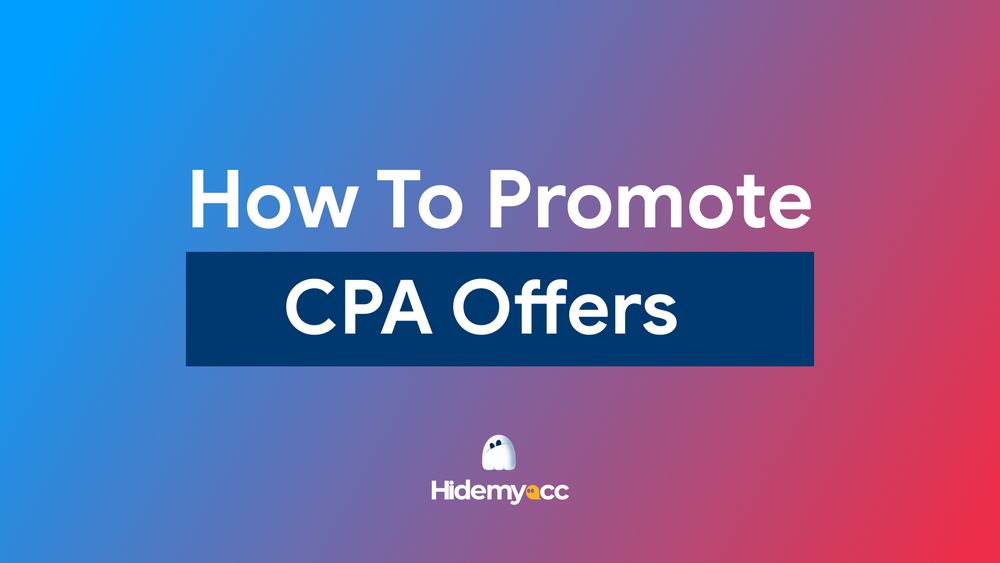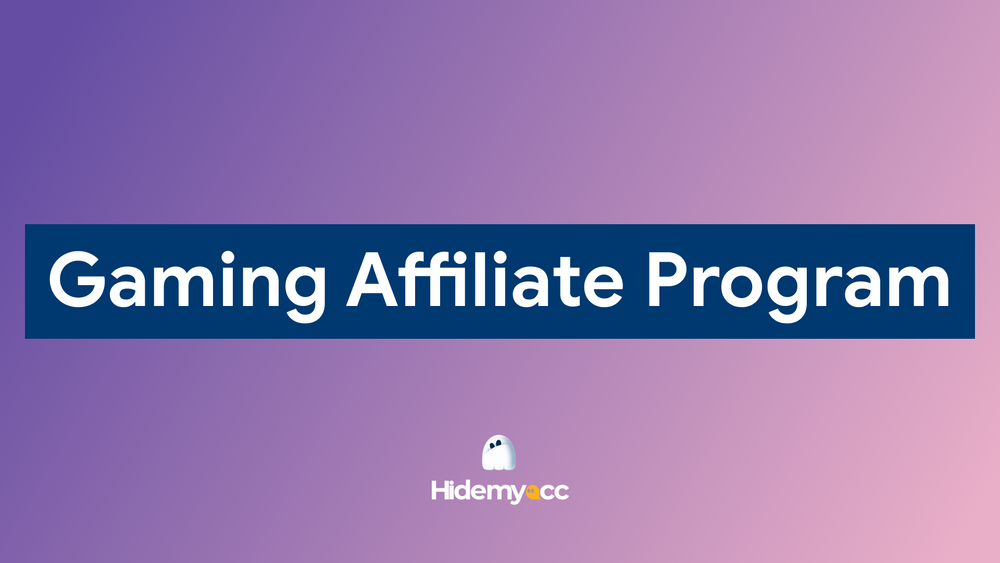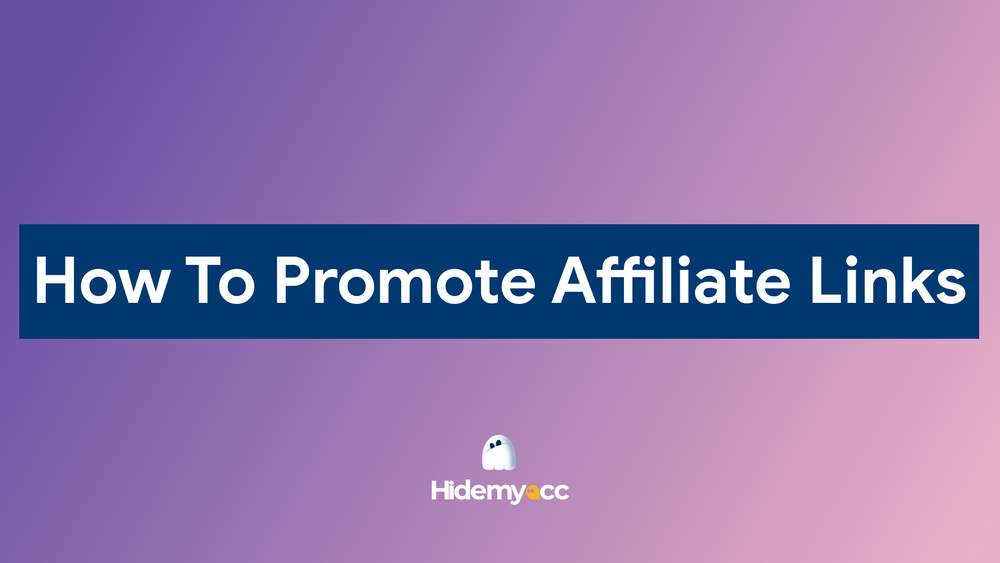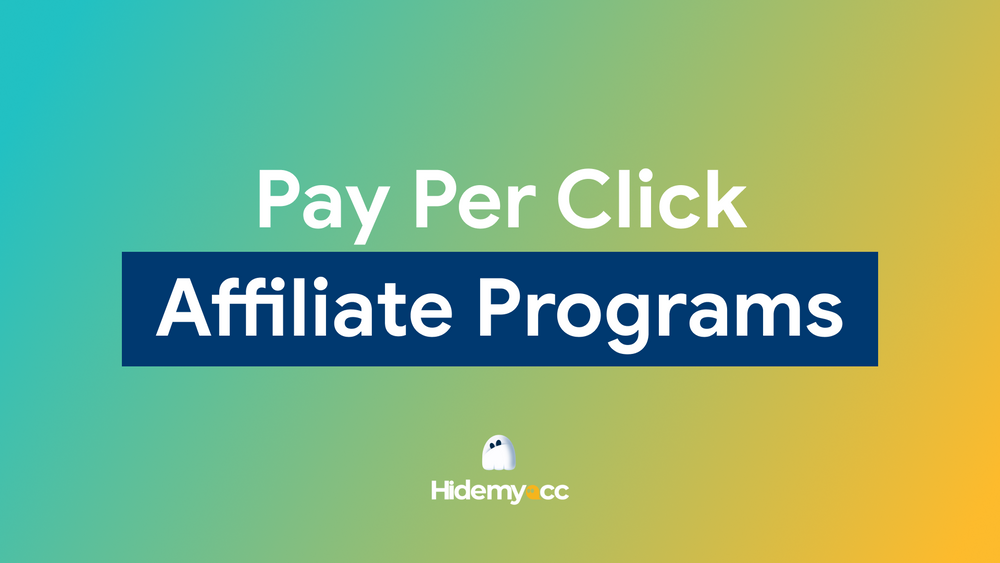Pinterest Affiliate Marketing is one of the easiest and most effective ways to earn money online. In this detailed guide, Hidemyacc will show you step-by-step how to use Pinterest to promote affiliate products, optimize your profile and pins, and scale your business for increased revenue.
1. What is Pinterest affiliate marketing?
Pinterest Affiliate Marketing refers to promoting affiliate products through your Pinterest account. When users click on your affiliate links and purchase, you earn a commission. With its visual search engine capabilities, Pinterest provides a prime platform for affiliate marketing, allowing you to reach a highly engaged audience.
Pinterest stands out because, unlike other social media platforms, its users are actively searching for ideas, products, and services. This allows affiliate marketers to tap into a market of potential buyers who are already primed for making purchasing decisions.
2. Why use Pinterest for affiliate marketing?
Pinterest is one of the most popular social networks with a large user base. You can use Pinterest to drive free traffic when doing affiliate marketing - whether it’s for blog posts, videos, or landing pages.
Here’s why Pinterest is one of the best platforms to drive traffic:
- High user: Pinterest has over 1.2 billion monthly users with high buying intent. You can take advantage of this free traffic source. Pinterest boasts a massive and diverse user base that provides a huge pool of potential customers.
- Visual appeal: Pinterest’s visual-first approach makes it ideal for promoting products through attractive images, creating a strong opportunity for affiliate marketers.
- Evergreen content: Pins have a long shelf life, meaning they continue driving traffic and generating commissions for months or even years after posting.
- Targeted search engine: Pinterest operates as a visual search engine, meaning users are actively searching for products, which aligns perfectly with affiliate marketing goals.
These advantages make Pinterest an ideal platform for affiliate marketing, offering both immediate and long-term benefits for marketers.
3. Pinterest affiliate marketing - 6 steps to start earning money online today
Now, let’s look at the steps to get started with Pinterest affiliate marketing. Follow this comprehensive guide to set up your account, choose a niche, join affiliate programs, create pins, and start sharing affiliate links.
3.1 Set up Pinterest business accounts
Instead of signing up for a personal account, you should choose a Business Account, as it offers more features such as running ads, managing campaigns, analyzing user insights, tracking Pinterest trends, and more.
If you want to promote multiple products, it’s a good idea to create separate Pinterest accounts for each niche. Here's how to set it up:
- Go to Pinterest’s Business portal: Navigate to the Pinterest Business section and click on the “Join as a Business” button.
- Create an account: If you already have a personal account, you can convert it to a business account. If not, sign up for a new one using your email address.
- Set up your profile: Complete your business profile by adding a logo, business name, and description. Make sure to incorporate keywords related to your niche.
- Enable rick pins: Rich Pins display additional information (like price and availability) directly on your pins. Go to your Pinterest settings and follow the steps to enable them.
- Connect your website (optional): If you have a blog or website, link it to your Pinterest account. This will increase trust and allow you to track data more effectively.
Now your Pinterest Business Account is set up, and you can start pinning affiliate products!
3.2 Choose a Niche
Choosing a niche is a crucial step in Pinterest Affiliate Marketing. Selecting which niche or product to promote requires thorough research, consideration of your available resources, and an understanding of the competition. You can refer to the method below to select the right one:
- Brainstorm potential niches: Start by thinking about the topics you're passionate about and those with potential affiliate products (e.g., beauty, fitness, home décor). You can use keyword research tools such as KeywordTool.io, SEMrush, or Google Keyword Planner...
- Research Pinterest trends: Use Pinterest Trend search to see what topics are trending. Check out boards and pins related to your niche to understand what content performs well.
- Evaluate market demand: Choose a niche with a decent search volume but not too competitive. Focus on niches that align with your interests to stay motivated.
- Target your audience: Define your target audience based on the niche. Ensure the audience is looking for products you can promote as an affiliate.
By choosing the right niche, you ensure that your pins resonate with a specific group of users, increasing the likelihood of conversions.
3.3 Find and join Affiliate programs
Now that you have your niche, the next step is to join affiliate programs. Here’s how to do it:
- Research affiliate networks: Start by researching the best affiliate networks (Amazon Associates, ShareASale, Rakuten Marketing) based on your niche.
- Sign up for programs: Join affiliate programs by signing up through their websites. Many networks like Amazon Associates and CJ Affiliate offer easy sign-ups.
- Read the terms: Ensure you understand the program's commission structure, payment terms, and policies.
- Get your affiliate links: Once you’re approved, grab your affiliate links to start promoting products on Pinterest.
Here are 10 great affiliate programs you can get started:
- Amazon Associates
- ShareASale
- Rakuten Marketing
- ClickBank
- CJ Affiliate
- Etsy Affiliate Program
- Skimlinks
- Bluehost Affiliate Program
- Target Affiliate Program
- eBay Partner Network
You can join multiple affiliate networks or just stick to one or two programs - this depends on your own strategy. However, make sure to pay attention to important factors such as commission rates, product types, payment methods, and other terms of the affiliate programs you join.
- If you want to find daily paid shows, read this: https://hidemyacc.com/affiliate-programs-that-pay-daily
- If you want to find high paid shows, read this: https://hidemyacc.com/high-paying-affiliate-programs
3.4 Design Pins
Once you have your affiliate links, it’s time to create your pins. Since Pinterest is an image-sharing platform, it’s important to design visually appealing graphics. You can use Sort Pin to search for image styles that get a lot of saves, downloads, and engagement - then model your pins after those.
Here’s how to design them:
- Use high-quality images: Pinterest is a visual platform, so using high-resolution images is key to grabbing attention.
- Design vertical pins: Pinterest’s ideal pin size is 1000 x 1500 pixels (2:3 aspect ratio). Vertical pins perform better.
- Minimal text: Keep the text concise and easy to read. Use fonts that are clear and large enough to be visible on mobile devices.
- Use design tools: You don’t need to be a graphic designer. Tools like Canva offer Pinterest templates that can help you create professional-looking pins.
- Include a clear call to action: Phrases like “Shop Now,” “Learn More,” or “Get Yours” can motivate users to click.
The more eye-catching and aligned with user insights your images are, the more likely they are to get saved by users. You can also use pre-made templates on design tools and customize them to suit your content.
3.5 Create pins and share links with Pinterest
After designing your images, you can upload them and turn them into pins on Pinterest. Here’s how to create pins and share your affiliate links on Pinterest:
- Upload your pin: Go to your Pinterest profile, click on the “+” sign to create a new pin, and upload your image.
- Add a pin description: Write a compelling description that includes relevant keywords for your niche. This helps with SEO. Bạn có thể sử dụng các công cụ nghiên cứu từ khóa để đặt title và viết description cho pins.
- Insert your affiliate link: In the "destination link" field, paste your affiliate link. Make sure to disclose that the link is an affiliate link
- Publish the Pin: Once you’re satisfied with your pin and description, click “Publish” to share it with your followers.
- Monitor your pins: Use Pinterest Analytics to track your pin performance. This helps you optimize future content.
- Advertising your pins: The more saves, clicks, interactions, etc. a pin has, the easier it is to push it to the top of the search results. You can find social network interaction exchange sites like Addmefast and pay a certain amount of points in exchange for other people's interactions.
You can create folders (boards) to group your pins together so users can easily follow them. Remember, the image content must be relevant to the product or content of your affiliate link.
3.6 Optimize profile and pins
Optimizing your Pinterest profile and pins ensures better visibility and higher engagement. Information such as your name, avatar, bio, website, etc., should be fully updated. You can follow these steps to optimize your profiles and pins.
- Use relevant keywords: Incorporate keywords in your profile, board titles, and pin descriptions to improve your visibility on Pinterest search.
- Post consistently: Consistency is crucial on Pinterest. Regularly upload new pins and boards to stay relevant.
- Engage with followers: Repin content, comment on pins and respond to your followers to build relationships and foster engagement.
Optimizing for SEO is crucial because Pinterest is one of the sites with massive traffic. When you use titles that match customer search intent, your pins have a much higher chance of appearing in search results.
4. How to scale your affiliate business with multiple Pinterest accounts
Once you find the right strategy, you can easily scale up by managing a large number of Pinterest accounts for affiliate marketing. This method is especially suitable for those working with different niches and targeting various audience groups.
To create a large number of Pinterest accounts without risking account suspension, you can combine Hidemyacc’s antidetect browser with proxies. Each Hidemyacc profile comes with unique browser fingerprint details. When you add a proxy, each profile will have a different IP address, making it impossible for websites to detect that these profiles are running on the same device.
You can customize browser fingerprint parameters based on your needs, such as operating system, browser type, screen resolution, fonts, memory, etc.
See detailed instructions with 5 steps to implement Pinterest Affiliate Marketing with Hidemyacc:
5. Conclusion
Pinterest Affiliate Marketing offers a great opportunity for earning passive income by leveraging the platform’s vast audience. By following the steps above—setting up a business account, choosing the right niche, finding affiliate programs, creating and sharing engaging pins, and optimizing your content - you can build a successful affiliate marketing business on Pinterest.
Remember, scaling your business with multiple accounts and tools like Hidemyacc can help you manage your growth effectively. Start implementing these tips today, and you’ll be on your way to a thriving affiliate marketing business on Pinterest.
>>> Other affiliate programs you can join:
- Coinbase affiliate program: A beginner’s guide to getting started and earning
- ClickBank affiliate for beginners: How to make your first $100 without a website?
- TikTok Affiliate Marketing: Grow Your Income Step-by-Step!
6. FAQ
Question 1: What is Pinterest affiliate marketing?
Pinterest affiliate marketing involves promoting affiliate products through your Pinterest account. When someone clicks and makes a purchase, you earn a commission.
Question 2: How do I get started with Pinterest affiliate marketing?
Start by setting up a business account, choosing a niche, joining affiliate programs, and designing and sharing pins with your affiliate links.
Question 3: Can I use Pinterest affiliate marketing without a website?
Yes, you can promote affiliate products on Pinterest without needing a website.
Question 4: How do I increase my Pinterest followers for affiliate marketing?
Engage consistently by posting high-quality content, using relevant keywords, and interacting with followers.
Question 5: What are the best affiliate programs for Pinterest?
Popular affiliate programs include Amazon Associates, ShareASale, and Rakuten Marketing

